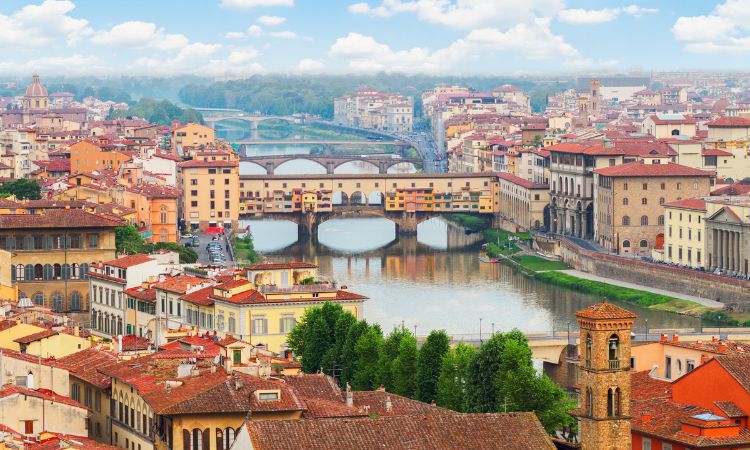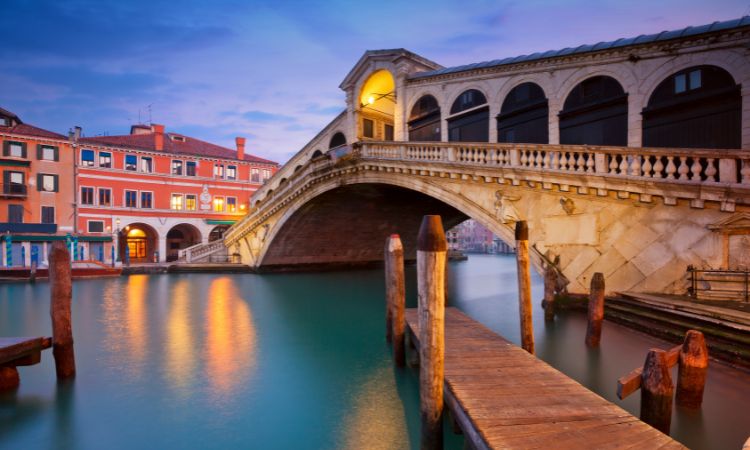Italy, a country synonymous with history, culture, and unparalleled natural beauty, is divided into 20 distinct regions, each offering its own unique blend of sights, flavors, and traditions. This guide delves into each region, highlighting their most notable features, major cities, renowned attributes, and connected entities.
How Many Regions Are In Italy?
There are 20 distinct administrative regions in Italy, each offering a unique blend of culture, cuisine, and geography. From the alpine landscapes of Trentino-Alto Adige in the north to the sun-drenched shores of Sicily in the south, these regions encapsulate the diverse heritage and rich history of Italy.
They range from highly urbanized and industrial areas like Lombardy and Piedmont to more rural and traditional regions such as Molise and Basilicata, showcasing Italy’s varied economic and social fabric.
List of Italy’s Regions
1. Abruzzo
Abruzzo is known for its diverse landscape, featuring both stunning coastlines and rugged mountain ranges. The region is a haven for nature lovers and outdoor enthusiasts.
Major Cities: L’Aquila, Pescara
- L’Aquila: Known for its medieval architecture and being close to the Gran Sasso mountain.
- Pescara: A significant port city famous for its beaches and vibrant nightlife.
Renowned For: Abruzzo is famous for its national parks, such as the Gran Sasso e Monti della Laga National Park, and traditional cuisine, including Arrosticini (lamb skewers). Abruzzo has a strong agricultural tradition, producing fine wines like Montepulciano d’Abruzzo.
2. Basilicata
Characterized by its mountainous and hilly terrain, Basilicata is also home to the unique city of Matera, known for its ancient cave dwellings. The region’s cuisine, particularly its breads and pastas, are also highly regarded.
Major Cities: Potenza, Matera
- Potenza: The highest regional capital in Italy, known for its scenic beauty.
- Matera: Famous for its Sassi di Matera, ancient cave dwellings.
Renowned For: Basilicata is celebrated for its rich history, ancient architecture, and the Matera European Capital of Culture 2019.
3. Calabria
Calabria is the toe of Italy’s boot, surrounded by the crystal-clear Ionian and Tyrrhenian Seas. It’s known for its rugged landscape and pristine beaches.
Major Cities: Reggio Calabria, Catanzaro
- Reggio Calabria: Famous for its waterfront and the Riace Bronzes at the National Archaeological Museum.
- Catanzaro: Known as the “city of two seas,” located between the Ionian and Tyrrhenian seas.
Renowned For: Calabria is famous for its spicy cuisine, particularly its use of chili peppers, and beautiful coastal towns like Tropea. The region is also a significant producer of citrus fruits and olive oil.
4. Campania
Campania is rich in cultural heritage, with ancient ruins, stunning coastlines, and vibrant cities. It’s home to the famous Amalfi Coast.
Major Cities: Naples, Salerno
- Naples: Known for its historic center, a UNESCO World Heritage Site, and as the birthplace of pizza.
- Salerno: Offers a mix of medieval and modern charm, with beautiful beaches and historical sites.
Renowned For: Campania is famous for its archaeological sites like Pompeii and Herculaneum, the stunning Amalfi Coast, and its culinary delights, especially pizza and seafood. The region is also known for its production of buffalo mozzarella and Limoncello.
5. Emilia-Romagna
This region is known for its rich gastronomy, medieval cities, and Renaissance art. It’s also home to several famous car manufacturers.
Major Cities: Bologna, Parma, Modena
- Bologna: Renowned for its historic center, the oldest university in the Western world, and its culinary tradition.
- Parma: Famous for Parmesan cheese and Parma ham.
- Modena: Known for its balsamic vinegar and as the home of Ferrari and Lamborghini.
Renowned For: Emilia-Romagna is celebrated for its culinary contributions, including Bolognese sauce, Parmesan cheese, and traditional balsamic vinegar.
The region is also a hub for automotive excellence, hosting brands like Ferrari, Lamborghini, and Maserati.
6. Friuli-Venezia Giulia
This region, bordering Austria and Slovenia, is known for its multicultural heritage, stunning alpine scenery, and coastal resorts.
Major Cities: Trieste, Udine
- Trieste: Known for its Habsburg legacy, vibrant coffee culture, and as a literary hub.
- Udine: Rich in Venetian-style architecture and art.
Renowned For: Friuli-Venezia Giulia is famous for its white wines, San Daniele ham, and the seaside town of Grado.
The region has strong cultural ties with Central Europe, reflected in its architecture, cuisine, and languages.
7. Lazio
Lazio, the region of Rome, is the heart of ancient Roman history and Catholicism. It offers a mix of historical sites, natural beauty, and vibrant urban life.
Major Cities: Rome, Latina
- Rome: The capital city, known for its ancient ruins like the Colosseum and Vatican City.
- Latina: A city known for its modernist architecture and nearby beaches.
Renowned For: Lazio is famous for its historical and cultural significance, including sites like the Roman Forum and the Sistine Chapel.
It’s also the center of the Catholic Church and has a strong film and media industry.
8. Liguria
Liguria, famous for its picturesque coastline, is home to the Italian Riviera, including the Cinque Terre, a UNESCO World Heritage Site.
Major Cities: Genoa, La Spezia
- Genoa: Known for its important role in maritime trade, its historic center, and as the birthplace of Christopher Columbus.
- La Spezia: A significant naval base and gateway to the Cinque Terre.
Renowned For: Liguria is celebrated for its stunning coastal scenery, pesto sauce, and charming seaside towns. The region’s economy is heavily influenced by its port activities and tourism.
9. Lombardy
Lombardy is an economic powerhouse, known for its fashion, finance, and the stunning Italian Lakes.
Major Cities: Milan, Bergamo, Como
- Milan: A global fashion and design capital, also famous for the Milan Cathedral and Leonardo da Vinci’s “The Last Supper.”
- Bergamo: Known for its Venetian walls and beautiful old town.
- Como: Famous for Lake Como and its luxurious villas.
Renowned For: Lombardy is known for its economic significance, fashion industry, and beautiful lakes. It also hosts major fashion brands and financial institutions.
10. Marche
Marche is characterized by its rolling hills, beautiful coastline, and rich artistic heritage.
Major Cities: Ancona, Urbino
- Ancona: A major port city known for its historic sites and beautiful beaches.
- Urbino: A Renaissance city, home to the Palazzo Ducale and the birthplace of Raphael.
Renowned For: Marche is known for its footwear industry, Renaissance art, and picturesque landscapes.
The region has a strong tradition in high-quality craftsmanship, especially in footwear and furniture.
11. Molise
Molise, one of Italy’s smallest and least known regions, offers a glimpse of rural Italy with its unspoiled landscapes and ancient traditions.
Major Cities: Campobasso, Isernia
- Campobasso: Known for its medieval castle and archaeological sites.
- Isernia: Rich in history, with Paleolithic sites and Roman ruins.
Renowned For: Molise is celebrated for its natural beauty, traditional crafts, and tranquil countryside.
It maintains a strong agricultural tradition, producing olive oil, wine, and truffles.
12. Piedmont
Piedmont, bordering France and Switzerland, is known for its fine wines, sophisticated cuisine, and the Alps.
Major Cities: Turin, Alessandria
- Turin: Famous for its baroque architecture, the Shroud of Turin, and as the headquarters of Fiat.
- Alessandria: Known for its military history and the Citadel of Alessandria.
Renowned For: Piedmont is famous for its truffles, Barolo and Barbaresco wines, and the Slow Food movement.
Piedmont is a major automotive and aerospace industry hub, with companies like Fiat and Avio Aero.
13. Puglia (Apulia)
Puglia, the heel of Italy’s boot, is celebrated for its whitewashed hill towns, centuries-old farmland, and lengthy Mediterranean coastline.
Major Cities: Bari, Lecce
- Bari: Known for its old town, Basilica of Saint Nicholas, and vibrant street life.
- Lecce: Famous for its Baroque architecture and rich history.
Renowned For: Puglia is known for its olive oil production, distinctive trulli houses, and beautiful beaches.
The region has a strong agricultural focus, particularly in olive oil and wine production.
14. Sardinia
Sardinia, an island in the Mediterranean Sea, is known for its rugged landscape, pristine beaches, and unique cultural heritage.
Major Cities: Cagliari, Sassari
- Cagliari: The island’s capital, known for its medieval architecture and beautiful beaches.
- Sassari: Known for its historical center and cultural festivals.
Renowned For: Sardinia is famous for its stunning coastline, the Nuragic civilization, and its distinct language and traditions.
The island has a strong pastoral tradition and is known for its pecorino cheese and Cannonau wine.
15. Sicily
Sicily, the largest island in the Mediterranean, boasts a rich history, diverse landscape, and a wealth of archaeological sites.
Major Cities: Palermo, Catania
- Palermo: Known for its vibrant street life, historic palaces, and markets.
- Catania: Located at the foot of Mount Etna, known for its Baroque architecture and vibrant nightlife.
Renowned For: Sicily is celebrated for its ancient Greek and Roman sites, Mount Etna, and distinctive cuisine, including arancini and cannoli.
The island has a strong agricultural base, particularly in citrus fruits, olives, and wine.
16. Tuscany
Tuscany is famed for its picturesque landscapes, Renaissance art, and fine wines. It’s the epitome of the Italian dream for many.
Major Cities: Florence, Pisa, Siena
- Florence: The cradle of the Renaissance, known for its art, architecture, and the Uffizi Gallery.
- Pisa: Famous for the Leaning Tower and its historic university.
- Siena: Known for its medieval cityscape and the Palio horse race.
Renowned For: Tuscany is celebrated for its cultural heritage, Chianti wine, and its influence on high culture.
Tuscany is a hub for art and history, with numerous UNESCO World Heritage Sites.
17. Trentino-Alto Adige
This region in the far north of Italy is known for its stunning Alpine scenery, Germanic influences, and outdoor activities.
Major Cities: Trento, Bolzano
- Trento: Known for its Renaissance architecture and the Castello del Buonconsiglio.
- Bolzano: A unique blend of Italian and German cultures, famous for its Christmas markets and the Ötzi museum.
Renowned For: Trentino-Alto Adige is famous for its ski resorts, hiking trails, and the Dolomites.
The Trentino-Alto Adige region has a strong focus on sustainable tourism and is a leader in renewable energy.
18. Umbria
Known as the “Green Heart of Italy,” Umbria is celebrated for its medieval hill towns, dense forests, and local cuisine.
Major Cities: Perugia, Assisi
- Perugia: Known for its historic center, chocolate production, and the Umbria Jazz Festival.
- Assisi: The birthplace of St. Francis, known for the Basilica of Saint Francis.
Renowned For: Umbria is famous for its religious heritage, truffles, and the Sagrantino di Montefalco wine.
Additionally, Umbria has a strong tradition in agriculture, particularly in wine and olive oil production.
19. Valle d’Aosta
This small, mountainous region is known for its Alpine peaks, including Mont Blanc and the Matterhorn, and its unique Franco-Provençal culture.
Major Cities: Aosta
- Aosta: Known for its Roman ruins and proximity to some of Europe’s highest peaks.
Renowned For: Valle d’Aosta is famous for its winter sports, castles, and Fontina cheese.
Also, it is a popular destination for skiing and mountaineering enthusiasts.
20. Veneto
Veneto is a region of great contrasts, from the watery wonders of Venice to the peaks of the Dolomites.
Major Cities: Venice, Verona, Padua
- Venice: A city built on water, famous for its canals, gondolas, and the Venice Biennale.
- Verona: Known for its Roman amphitheater and the setting of Shakespeare’s “Romeo and Juliet.”
- Padua: Renowned for its university, one of the oldest in the world, and the Scrovegni Chapel.
Renowned For: Veneto is celebrated for its artistic heritage, Prosecco wine, and the Venetian Carnival.
Veneto also has a strong industrial base, particularly in textiles, wine production, and tourism.
Each of these regions offers a unique glimpse into the rich tapestry that is Italy, blending history, culture, and natural beauty in a way that is distinctly Italian. Whether you’re exploring the ancient ruins of Rome, the



